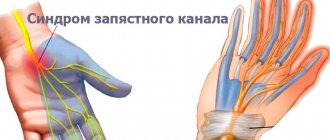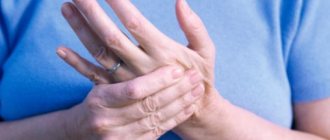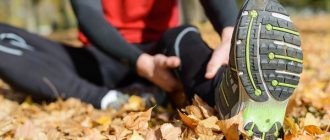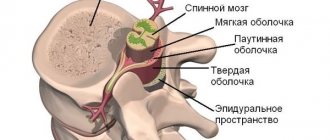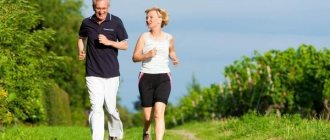The first part in a series about joints.
Pain and discomfort in the joints affect neither professional athletes nor ordinary people. Many people still remember the unexpected end of the career of Zenit midfielder Viktor Faizulin, who was never able to return to form after numerous operations on the cartilage of the knee joint. A year ago, Luis Suarez was out of action for a long period due to knee surgery - which ultimately allowed the athlete to recover, but quite possibly was one of the reasons for leaving Barcelona.
According to doctors, joint pain and impaired mobility are one of the most common reasons for seeking medical help. Joints can get sick after injuries, infectious and viral diseases, diabetes, thyroid diseases, oncology...
Joints are a very multifaceted topic that cannot be covered in one article, so we will release a series. In this article we tell you which joint pains and diseases are the most common and why they occur. Helping us is Sergey Yurievich Daletsky, a practicing specialist in rehabilitation massage with 20 years of experience.
Attention, the text will contain a lot of complex information about the structure of the joint. If you don’t want to deal with this, you can move on to the next article with an analysis of problems in practice - problems with the joints of the upper body .
What is a joint and why do joints have different structures?
Joints in our body serve to movably connect the ends of bones; they are surrounded by a capsule of fibrous connective tissue and strengthened by ligaments.
The end surfaces of the bones that connect the joint are covered with elastic cartilage tissue - articular cartilage. One of the surfaces is convex (the articular head), and the other is concave (called the glenoid fossa). What is interesting and important is that articular cartilage is completely devoid of blood vessels and nerves, so it cannot hurt.
The ends of the bones are surrounded by an articular capsule, which envelops them like a sealed coupling consisting of collagen and elastic fibers and loose connective tissue. It has many blood and lymphatic vessels, and there are nerve branches. Sometimes a vascular network of several arteries is formed on the surface of the joint - such arterial networks are found in the elbow and knee joints.
The inside of the joint capsule is lined with a special layer of cells - this is a synovial membrane that secretes sticky transparent synovial fluid (synovium). It is the synovium that acts as a lubricant for the joint, allowing the cartilage to slide without interfering with each other. It moisturizes cartilage tissue, reduces friction and strengthens the joint due to the adhesion of surfaces. There is a cavity inside the joint - this is a very narrow gap, which contains no more than 2-4 ml of synovial fluid.
In addition, there are ligaments (capsular and extracapsular). Ligaments in combination with tendons and muscles make up the strengthening apparatus of the joint, so violations of the strength of the ligaments always inevitably lead to problems with the joint itself.
In addition to the main anatomical structures of the joint, it may also contain additional elements, since the anatomical features of a particular joint depend on its purpose.
As humans evolved, the loads on some joints became more complex and increased. This is how articular discs and menisci (fibrous cartilage located in the joint cavity), articular lip (cartilaginous rim), synovial bursae (capsules filled with synovium around tendons or under muscles lying near the joint) and other elements appeared. They are needed to better resist shocks and promote movement. For example, the menisci (crescent-shaped intra-articular cartilages) play the role of buffers and protect the knee cartilage from damage during impacts, and protect the joint capsule from pinching during stretching. And the synovial bursae reduce friction of tendons and muscles during movements.
Functional and psychosomatic pain
Sometimes joint pain has functional causes, that is, it is associated with the normal functioning of the body. This can be pain after heavy physical activity, pain during pregnancy, and in children and adolescents - the so-called “growing pains”. All of these are temporary disturbances that are caused by the normal functioning of the joint.
In some cases, pain can be of a psychological nature (so-called psychosomatic pain). They have an indefinite rhythm, varying intensity, often disappear during sleep and intensify with emotional stress, accompanied by a burning sensation, tingling, and goosebumps.
With the use of painkillers and physical therapy, functional pain does not disappear, but only slightly decreases. However, with a change in working and living conditions, they can completely go away. The use of sedatives also helps.
How to cope with pain without drugs?
Muscle pain during colds and flu is the main symptom of intoxication. You shouldn’t “suppress” it with painkillers unnecessarily: such drugs will put even more strain on the liver and kidneys, which will slow down the recovery process. The pain syndrome begins in the acute phase of the disease and disappears after recovery. To improve your well-being, you can follow simple tips.
- Drink more. The stronger the intoxication, the worse the sick person feels. To quickly cleanse toxins, the body needs fluid. It is better to choose still drinks that do not contain sugar. You can drink clean water at room temperature, add lemon and frozen berries to it. Green tea will help speed up the elimination of toxins.
- Breathe fresh air. In a confined space where a sick person is located, the concentration of carbon dioxide increases sharply. Because of this, headache, drowsiness, and irritability develop. The body has to spend more energy to get enough oxygen. Therefore, it is important to regularly ventilate the patient’s room.
- Eat right. Until complete recovery, you should give up strong broths, coffee, chocolate, cocoa and canned foods. Prohibited are fatty meat, alcohol, baked goods, sweets and fast food. Choose foods that are easy to digest and won't overload your digestive tract. These include fresh fruits, non-starchy vegetables, honey, natural yoghurts and kefir. To prevent ARVI in adults and quickly recover during illness, it is useful to eat rose hips, cranberries, lemons and other foods rich in vitamin C.
Joint pain due to ARVI and influenza
In acute respiratory viral infections, arthralgia is not so common and is mildly expressed, with the exception of acute respiratory syndrome coronavirus (SARS-CoV). The muscles hurt very badly and the pain radiates to the joints also with the flu, and the process affects several joints at once. Arthralgia is accompanied by aches throughout the body, radiating to the leg or arm, accompanied by pain in the eye sockets and severe headache. In this case, there are specific symptoms of a respiratory disease: fever, cough, etc.
Typically, such joint pain goes away as the underlying disease recedes. If the process is delayed, then inflammation of the ligamentous apparatus occurs, and as a result, the ligaments must be treated. If this is not done on time, the inflammation will become chronic. In this case, there will be no painful sensations, but the problem will remain and will worsen. This situation is a real vicious circle, which can only be broken with the help of long-term complex treatment.
Treatment for ARVI or influenza is prescribed in accordance with the symptoms of the underlying disease. Non-steroidal anti-inflammatory drugs are used to relieve pain. It is important to maintain bed rest - this is necessary to relieve stress on the joints, which can cause complications, such as arthritis.
What does body aches mean?
Aches are commonly referred to as dull pain in muscles, bones, and joints17. To roughly understand what it is associated with, you need to pay attention to other symptoms.
Body aches associated with colds and flu
Muscle and joint pain associated with fever can be a manifestation of viral and bacterial infections of various organs2. Most often, aches throughout the body along with a rise in temperature occur with acute respiratory viral infections (ARVI), including influenza5. However, it can be expressed differently, depending on the “culprit” - the causative agent of the infection:
- With ARVI (for example, rhinovirus, adenovirus infection), pain in the body is mild1,5. The patient is more concerned about a runny nose, sore and sore throat, cough, hoarseness, and possibly a slight increase in temperature1.5. As a rule, it remains subfebrile5, that is, within 37-38 0C8, but the temperature reaction largely depends on the characteristics of the body and the virus that caused the inflammation5.
- With influenza, muscle and joint pain is one of the leading symptoms1,4. It appears against a background of general weakness, chills, headache and severe redness of the eyes1. A feeling of sore throat, rawness behind the sternum along the trachea, a dry hacking cough and other symptoms of inflammation of the respiratory tract with influenza appear later1,4. Body temperature may be above 38 0C1.
Fever and aches are manifestations of intoxication1,4, which occurs as a result of exposure to substances secreted by microbes or formed in inflamed tissues. These substances penetrate the blood and spread throughout the body, including the muscles3. By irritating nerve endings, they cause aches and pain3,8. Therefore, the more pronounced the temperature reaction, the more the whole body hurts8.
With influenza, fever, pain in muscles and joints last about 5 days, and with ARVI - from 2 to 12 days5. Then, as the temperature decreases and normalizes, the cold symptoms weaken8.
Joint pain due to injury
The ligamentous apparatus of a joint can be damaged by an unsuccessful fall, sudden movement, not to mention serious sports activities or an accident. Even uncomfortable shoes can cause damage: too high a heel or an unstable sole. You can twist your leg or stumble, for example, on a slippery surface, injure your forearm or hand when falling on an outstretched arm, bent elbow, etc.
A bruise is a closed soft tissue injury that occurs as a result of a blow or fall. In joints, the synovial membrane and the muscles, blood vessels and nerve tissues surrounding the joint capsule are especially sensitive to bruises. When a bruise occurs, pain, swelling, bruising appears, and joint function is impaired.
Dislocation is a displacement of the ends of the articular bones, causing disruption of the joint. The risk of dislocation depends on the extent of the displacement. Traumatic dislocations are accompanied by rupture of the joint capsule, damage to ligaments (partial tears, sprains and other minor injuries), nerves and blood vessels (with hemorrhage inside the joint). Symptoms depend on the degree of damage - but at the time of injury there is always a sharp pain, which then accompanies all attempts to move the joint. It loses its normal shape and sinks inward (the lower bone in the joint looks like it has collapsed). An x-ray is taken to confirm the dislocation and assess the extent of the damage.
Another possible cause of pain is a sprain or partial rupture of the ligaments: distortion. We can talk about either stretching with partial rupture of the fibers or complete rupture. The surrounding muscles, blood vessels and nerves are also injured. In the most severe cases, separation from the bone tissue at the site of attachment of the ligament is possible. The pain is maximum in the area of the injured ligament, especially severe during movement and when palpating. The joint itself looks swollen and too mobile.
Fractures of the bones that make up a joint can be either extra-articular or intra-articular. These are severe injuries that are accompanied by injuries to the surrounding soft tissues (ruptures of muscles, ligaments, blood vessels, etc.). They cause unbearable pain, and if bone fragments appear, a crunching sound is heard. Bruises form in the joint area, its volume increases, the joint behaves unnaturally - it is excessively mobile and deformed.
Joint pain can also be caused by damage to additional anatomical structures. The most dangerous are ruptures of the menisci of the knee joint.
Treatment should not be neglected in case of joint injury. Problems with ligaments are especially dangerous; they can lead to chronic joint diseases.
Victoria Sinitsina, paired with Nikita Katsalapov, became European champions in ice dancing in 2021, but this season the couple was forced to withdraw right during the free dance at the second stage of the Russian Cup. The reason for this is the partner’s knee injury. Although after some time the athletes took to the ice - and won the Moscow stage of the Grand Prix - they still decided to skip the Russian Championship.
Doctors recommended that Victoria avoid stress until the knee goes away completely. But she only stayed at home for a week and a half: “I tried to combine rehabilitation with preparation, we really wanted to get ready for the competition. It hasn’t completely gone away – sometimes I skate with a knee brace, I’m sure we’ll be able to approach future competitions in better shape.”
The situation was further complicated by the fact that both athletes suffered from a severe cold. As a result, the team doctors allowed the couple only light activities, for example, participation in ice shows.
How to stretch your muscles during illness?
Muscles can ache from lack of movement if you have to stay in bed for a long time due to a cold. But you shouldn’t start active training immediately after an illness. During the recovery period, just try to move more. You can invite your friends for a walk in the park on the weekend, and walk a couple of stops before and after work. Doctors advise returning to normal exercise no earlier than 1-2 weeks after recovery, when weakness passes and the body finally regains strength.
If there is no high temperature, massage will help get rid of muscle pain due to a cold. Gently knead the sore areas with stroking and patting movements. You can apply a little massage oil or honey to your body if you are not allergic to them. The procedure will improve blood supply to the muscles and surrounding tissues, stimulate metabolism and accelerate the removal of toxins.
The most common joint diseases: arthritis and arthrosis
There are many diseases of the joint system: arthritis, arthrosis, periarthritis (inflammation of periarticular tissues - tendons, ligaments, muscles, joint capsule), osteochondrosis, etc. All of them are accompanied by pain in the joints. To accurately name a disease in medicine, terms denoting the diagnosis and location of the lesion are combined. For example, gonarthrosis is made up of 2 Greek words: gony (knee) + árthrosi (joint).
In 2021, a survey was conducted of 846 Russian doctors of various specialties, whose work is related to the treatment of musculoskeletal pain. Judging by the results, most often patients come to see doctors with osteoarthritis of the knee, hip joints and hands. And these are not always elderly people.
Arthritis
If a joint hurts for no apparent reason and during prolonged immobility - late at night, in the morning, and the patient has to move to relieve the condition - then doctors talk about inflammatory pain. Such pain is constant, intense and long-lasting (more than 24 hours), and is characteristic of arthritis and periarthritis.
The cause of inflammation in the joint (or periarticular tissues) can be a local or general infection, allergy, autoallergy, injury, etc. The development of arthritis is promoted by hypothermia and physical overload. All elements of the joint, including bones and cartilage, can be involved in the inflammatory process. When inflammation spreads to the ends of the articular bones (epiphyses), the disease is called osteoarthritis.
The peculiarity of the structure of soft articular tissues - namely, the fact that their synovial membrane is abundantly “stitched” with blood vessels and nerve endings - explains the ability of joints to quickly become inflamed. Typically, the causative agent of the disease is introduced into the joint cavity through the blood or lymph flow, after which it remains in the synovium. A striking example is tuberculous, septic, and viral arthritis.
In rheumatoid arthritis, the inflammation pattern is much more complex: this disease is caused by an immune shift, which leads to the pathological formation of a special antibody in the joint capsule - rheumatoid factor, which provokes an inflammatory reaction.
What changes occur in a joint with advanced arthritis? Death of cartilage, deformation and proliferation of bones. The joint space narrows to a minimum, and pathological growths form along the edges of the joints. All this occurs against the background of accumulation of pus, blood and lymph in the joint capsule, and inflammation spreads to the surrounding tissues.
Arthrosis
If the pain is intermittent, occurs with any movement, intensifies in cold and damp weather, after exercise (for example, at the end of the working day) and disappears at night or at rest - this is the so-called mechanical type of pain. Mechanical pain is usually dull, accompanied by a feeling of stiffness, rapid fatigue, stiff joint mobility, and deformation. A characteristic symptom is the appearance of crunching, cracking or creaking in the knees.
Typically, joints behave this way with arthrosis, which can be caused by loads exceeding the functional capabilities of the joint, microtrauma, and endocrine disorders (including obesity). Infectious, allergic and toxic factors also influence, but in this case there is no inflammation.
What happens in a joint with arthrosis? Overgrowth of bone cartilage is observed, the alignment of the articular surfaces - the articular head and the articular fossa - is disrupted, and the joint space narrows. Particles of destroyed cartilage tissue (osteophytes) can break off and remain inside, covered with a sheath of connective tissue.
Since the cartilage tissue of the joint is devoid of nerves, there is no pain when it is damaged. Pain occurs when the pathological process moves from cartilage to the joint capsule, synovial membrane, ligaments and soft tissues. Changes also occur in them - thickening, deposits of calcium salts, and the growth of dense connective tissue occur. The addition of an inflammatory component is indicated by the appearance of night pain: in this case, they speak of an advanced stage of the disease and the development of the disease into arthritis.
With senile arthrosis, there may be no pain at all - only aches and a feeling of stiffness in the joints. The disease does not spread beyond the joint, with the exception of cases complicated by arthritis.
Gonarthrosis - arthrosis of the knee joint - became the reason for Viktor Faizulin’s retirement from sports. The footballer says that his problems with the knee joint began with a cruciate ligament rupture: “It’s good that I lasted ten years. After surgery, the joint always begins to work differently - not like a healthy one. Somewhere the ligament was overstretched, somewhere it was not stretched - hence the problems... Of course, there are successful operations... But think about those who ended their careers a few years after changing the ligament. There are many of them, we just don’t know about them.”
Often, a cruciate ligament rupture occurs when the tibia deviates outward, when the load on the anterior cruciate ligament increases, causing it to tear. This is one of the most common injuries in football, which is caused by a fall with subsequent dislocation and hyperextension of the lower leg (can occur during a strong side collision with an opponent, sudden braking or change of direction at high speed, unsuccessful landing after a jump or after hitting an opponent's knee).
Pain in one of the joints began to bother me. What to do?
You need to go to the doctor, but until you get an appointment, Doctor of Medical Sciences, Professor Nikolai Zagorodniy recommends choosing a body position in which pain does not appear or decreases. It is necessary to exclude all movements that worsen your well-being.
For example, with osteoarthritis, these are jumping, deep squats, prolonged squatting, running, fast and long walking, especially on stairs or uneven terrain when you have to overcome ups and downs.
If you suspect osteoarthritis, it is not advisable to lift and carry heavy objects. Comfortable shoes are very important, which can absorb shocks that occur in the limb when the heel touches the ground. These are shoes with low (no more than 4 cm) wide heels, equipped with a soft elastic sole.
If there is longitudinal or transverse flatfoot, in order to reduce the load on the joints, it is advisable to use insoles-instep supports, and in case of heavy loads and long walking, use orthoses. In many cases, you need to lose excess weight.
What symptoms should you look out for?
In the event of an injury accompanied by severe pain, you should see a doctor immediately. But, if the joint bothers you only from time to time, none of us rush to the hospital. Sometimes the pain is really a consequence of a bruise or minor sprain, which goes away after applying an anesthetic cream. You need to be wary in cases where pain is accompanied by the following symptoms:
- A swelling that develops with tissue swelling that accompanies inflammation.
- Violation of joint stability - in other words, its excessive mobility.
- Persistent joint deformation (hard, uneven thickenings).
- Atrophy (decrease in volume) of the periarticular muscles.
- An increase in the local temperature of the joint and changes in the skin above it (reddened, moist or excessively dry skin).
- Pain with pressure and movement.
- Inability to perform certain movements and discomfort when moving.
- A crunching sound in the joint, which is sometimes heard, and sometimes can be felt by placing your palm on the joint and at the same time making passive movements in it.
Body aches not associated with a cold
Sometimes discomfort in muscles or joints can be a completely natural reaction of the body to physical activity2, for example, if this is your first workout or you started exercising after a long break. Even in healthy people, similar symptoms often appear after a long walk in cold weather, being in an uncomfortable position or psycho-emotional stress2.
The following diseases and disorders can be the cause of joint pain2:
- allergic reactions;
- diabetes;
- vegetative-vascular dystonia (neurosis);
- blood diseases;
- dysfunction of the thyroid gland;
- chronic intestinal diseases;
- chronic hepatitis and cholecystitis;
- metabolic disorders;
- tumors.
You can get rid of discomfort only by eliminating its cause. Therefore, it is so important, regardless of whether body aches are accompanied by an increase in temperature or not, to consult a doctor and begin the necessary treatment in a timely manner.
Which specialists treat joints?
Pain in ligaments and joints is treated by specialized specialists: neurologists, rheumatologists and surgeons specializing in joint diseases. You can contact either the clinic at your place of residence or a paid clinic.
Another option is to go to a medical and physical education clinic. Such medical institutions are present at sports complexes and accept not only professional athletes, but also everyone. There are rehabilitation doctors who specialize in sports medicine and deal with the restoration of joints after injuries and disorders associated with physical activity.
Often a visual examination is sufficient for an experienced doctor, but sometimes an x-ray, ultrasound or MRI is required. Although MRI is a very effective diagnostic method, the use of tomography is not practiced in every doubtful case: X-rays are usually sufficient. If problems with ligaments are suspected, ultrasound is effective, which clearly shows the condition of the ligamentous apparatus. If its thickening is noticed, this is enough to diagnose the inflammatory process.
First of all, you need to find out what exactly hurts. Perhaps this is not a joint at all, but we are talking about inflammation of the place of attachment of tendons, ligaments, capsules to the bones (enthesitis). This could be dactylitis - inflammation of the phalanges of the fingers. In the joint itself, inflammation of the synovial membrane is possible - synovitis. And that's not all. It is important not to waste time and start effective treatment as quickly as possible. At an appointment with a specialist, you need to ask all the questions you are interested in - to do this, it is recommended to make a list in advance of what you would like to ask.
In the following articles, we will tell you in more detail in what situations related to an active lifestyle, pain in the ligaments and joints most often appears. Let's consider questions about the use of anti-inflammatory drugs, the effectiveness of chondroprotectors, bandages, the features of therapeutic exercises, massage, physiotherapy and, ultimately, endoprosthetics.
Effect of RINZA® against flu and colds
For mild to moderate pain in muscles and joints, some experts primarily recommend the use of paracetamol6, which has a dual effect - analgesic and antipyretic6. Paracetamol has been well studied and has a broad safety profile, which allows its use to relieve fever and pain in ARVI6.
The RINZA® line of drugs is intended for the symptomatic treatment of colds and flu. Thanks to the paracetamol content, they fight cold symptoms such as body aches, headaches, muscle and back pain, fever and nasal discharge9,10,11.
RINZA® tablets are suitable for use throughout the day by adults and children over 15 years of age. The drug contains caffeine9, which enhances the effect of paracetamol16. The drug is ready for action within 10 minutes after administration15.
In addition to paracetamol and caffeine, RINZA® tablets contain9:
- the vasoconstrictor component phenylephrine, which facilitates breathing through the nose, reducing swelling of the mucous membrane of the nasal cavity and paranasal sinuses;
- antiallergic component chlorphenamine, which helps reduce nasal secretion (mucus secretion), itching of the eyes, nose and throat.
RINZASIP® with vitamin C is a powder for preparing a hot drink containing an increased dose of paracetamol. Ascorbic acid (vitamin C) in its composition helps to increase the body's resistance to influenza and colds10, and pheniramine is included in the drug as an antiallergic component10. You can choose RINZASIP with vitamin C with the taste and aroma of orange, lemon or black currant10. For the symptomatic treatment of colds, the drug can be taken for no more than 5 days10.
The powder for preparing the hot drink RINZASIP® for children11 includes not only paracetamol, but also pheniramine and ascorbic acid11. RINZASIP® for children with raspberry flavor is suitable for adolescents and children from 6 years of age, it relieves unpleasant symptoms of colds and supports the body's defenses11.
Remember that the cause of body aches can be not only a common cold, but also other diseases and conditions that require consultation with a specialist7. For example, aches and diarrhea are likely signs of bowel disease2,8. If muscle and joint pain is combined with a sore throat, you may have a sore throat8. However, do not rush to diagnose yourself. Only a doctor can understand both the symptoms and their causes. Therefore, in order to start treatment on time, it is necessary to contact a therapist or pediatrician immediately when muscle or joint pain appears2,7.
In conclusion, let us remind you that it is better to prevent any disease than to treat it. To reduce the risk of contracting ARVI and influenza12,13,14:
- try to visit public places less often during epidemics;
- stay indoors with other people as little as possible;
- use personal protective equipment;
- maintain social distance;
- do not forget to wash your hands with soap and treat them with antiseptic more often;
- spend more time outdoors and on the move;
- support your immunity with hardening and good nutrition;
- Get a flu shot14.
The information in this article is for reference only and does not replace professional advice from a doctor. To make a diagnosis and prescribe treatment, consult a qualified specialist.



